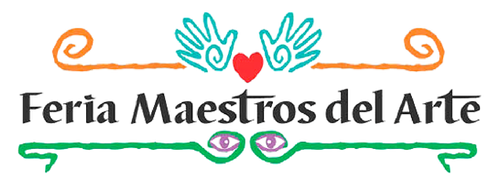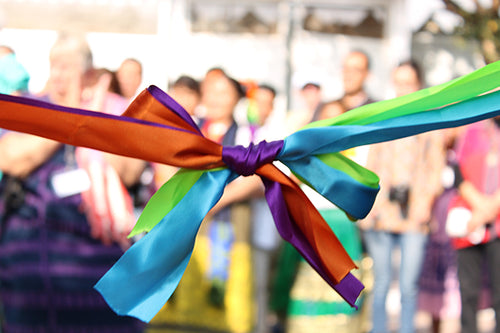
Enedina y Eliseo Castillo Castillo, Tocuaro, Michoacán
Enedina and Eliseo Castillo and their family of 14 children are an industry unto themselves. They have all found success as wood carvers - award-winning wood carvers. Enedina also weaves rebozos - a type of shawl worn by Mexican women for centuries. Her rebozos are usually one color and very simple compared to rebozos of other weavings throughout Mexico, however, the knot work at each end can be very elaborate.
Enedina also weaves rebozos - a type of rebozo used by Mexican women for centuries. Her rebozos are normally one color and very simple compared to rebozos of other weavings throughout Mexico, however, the knot work at each end can be very elaborate.
A rebozo is long and flat and can be worn in a variety of ways, usually folded or wrapped around the head and/or upper body for protection from the sun, for warmth and as an accessory to an outfit. It is also used to carry babies and large packages, especially among indigenous women. The origin of the garment is unclear, but most likely derives from the early colonial period, as traditional versions of the garment show indigenous, European and Asian influences.
Traditional rebozos are hand-woven from cotton, wool, silk and rayon in various sizes, but all have some kind of pattern (usually from the ikat method of dyeing) and have bangs, which can be woven with your fingers in intricate designs. The garment is considered part of the Mexican identity and almost every Mexican woman owns at least one. It has been worn by Mexican women such as Frida Kahlo and actress Maria Felix.
Enedina's father taught her to carve wood when she was just a child. She in turn taught her young husband Eliseo and he has taught all their children, initiating them to fish carving in soft pine wood.
Today Eliseo spends most of his time working in light-colored tropical hardwoods to carve portraits of the Virgen de la Salud - a Virgin famous throughout Michoacán for the miraculous healing power attributed to her. He also carves and paints competition-winning masks, which are used in his town's festivities. These complex and artistic creations depict ancient themes with the tails of writhing serpents and demons with sharp, dangerous fangs and fearsome black eyes. The masks are sanded smooth as silk and painted with layer upon layer of colorful paints, then perfectly lacquered to a glossy finish. All of Eliseo's tools are handmade, some specially designed by him and forged in Mexico City or Morelia.
In addition to her work as a sculptor, Enedina makes the costumes for the fiestas that go with masks worn by her children, who dance the ancient stories for the education and delight of the village children. These costumes are brilliant works of art in their own right. Their sequined costumes and Eliseo's masks have appeared in art magazines and the photos are seen all over the world.
The masks are born from indigenous traditions and represent a sample of the cosmic vision of indigenous peoples. In the Purepecha tradition (also called Tarascans), the masks come to life in the dances of the Moors and Christians, the demons, the negritos, the elders, the herders, the hermits, the Maringuias (meaning "men dressed like women") and the Cúrpites (a Purepecha term for "those who gather").
The older sons make fantasy figures called nahuales. These represent spirits. Strangely imaginative creatures, usually having several heads with fangs or tusks and perhaps several tails, they look like animals straight out of a nightmare. Like Elysian masks, they are painted in wild colors and polished to a high gloss.
Domicilio Conocido
443 303 3824
Tocuaro, Michoacán

